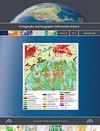利用基于地图的空间任务的眼动数据识别地图用户:用户隐私问题
IF 2.4
3区 地球科学
Q1 GEOGRAPHY
Cartography and Geographic Information Science
Pub Date : 2021-10-06
DOI:10.1080/15230406.2021.1980435
引用次数: 8
摘要
摘要具有不同特征的个体在地图阅读和寻路任务中表现出不同的眼动模式。在这项研究中,我们旨在探索地图用户的眼球运动是否以及在多大程度上可以用来检测是谁创造了它们。具体来说,当用户执行基于地图的空间任务时,我们专注于使用凝视数据来推断用户的身份。我们收集了32名参与者在使用地图完成一系列自我定位和空间定向任务时的眼动数据。我们提取了五组眼动特征,并训练了一个随机森林分类器。我们使用了一个任务省略的方法来交叉验证分类器,并获得了89%的最佳识别率和2.7%的相等错误率。这一结果是眼动用户识别研究中报告的最佳性能之一。我们评估了特征的重要性,发现基本统计特征(如瞳孔大小、扫视潜伏期和注视分散度)比其他特征集(如空间注视密度、扫视方向和扫视编码)产生了更好的性能。这一结果为开发个性化和自适应的基于凝视的地图交互开辟了潜力,但也引发了人们对数据共享和基于凝视的地理应用程序中用户隐私保护的担忧。本文章由计算机程序翻译,如有差异,请以英文原文为准。
Identifying map users with eye movement data from map-based spatial tasks: user privacy concerns
ABSTRACT Individuals with different characteristics exhibit different eye movement patterns in map reading and wayfinding tasks. In this study, we aim to explore whether and to what extent map users’ eye movements can be used to detect who created them. Specifically, we focus on the use of gaze data for inferring users’ identities when users are performing map-based spatial tasks. We collected 32 participants’ eye movement data as they utilized maps to complete a series of self-localization and spatial orientation tasks. We extracted five sets of eye movement features and trained a random forest classifier. We used a leave-one-task-out approach to cross-validate the classifier and achieved the best identification rate of 89%, with a 2.7% equal error rate. This result is among the best performances reported in eye movement user identification studies. We evaluated the feature importance and found that basic statistical features (e.g. pupil size, saccade latency and fixation dispersion) yielded better performance than other feature sets (e.g. spatial fixation densities, saccade directions and saccade encodings). The results open the potential to develop personalized and adaptive gaze-based map interactions but also raise concerns about user privacy protection in data sharing and gaze-based geoapplications.
求助全文
通过发布文献求助,成功后即可免费获取论文全文。
去求助
来源期刊
CiteScore
5.20
自引率
20.00%
发文量
23
期刊介绍:
Cartography and Geographic Information Science (CaGIS) is the official publication of the Cartography and Geographic Information Society (CaGIS), a member organization of the American Congress on Surveying and Mapping (ACSM). The Cartography and Geographic Information Society supports research, education, and practices that improve the understanding, creation, analysis, and use of maps and geographic information. The society serves as a forum for the exchange of original concepts, techniques, approaches, and experiences by those who design, implement, and use geospatial technologies through the publication of authoritative articles and international papers.

 求助内容:
求助内容: 应助结果提醒方式:
应助结果提醒方式:


